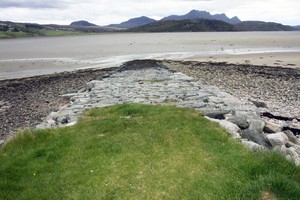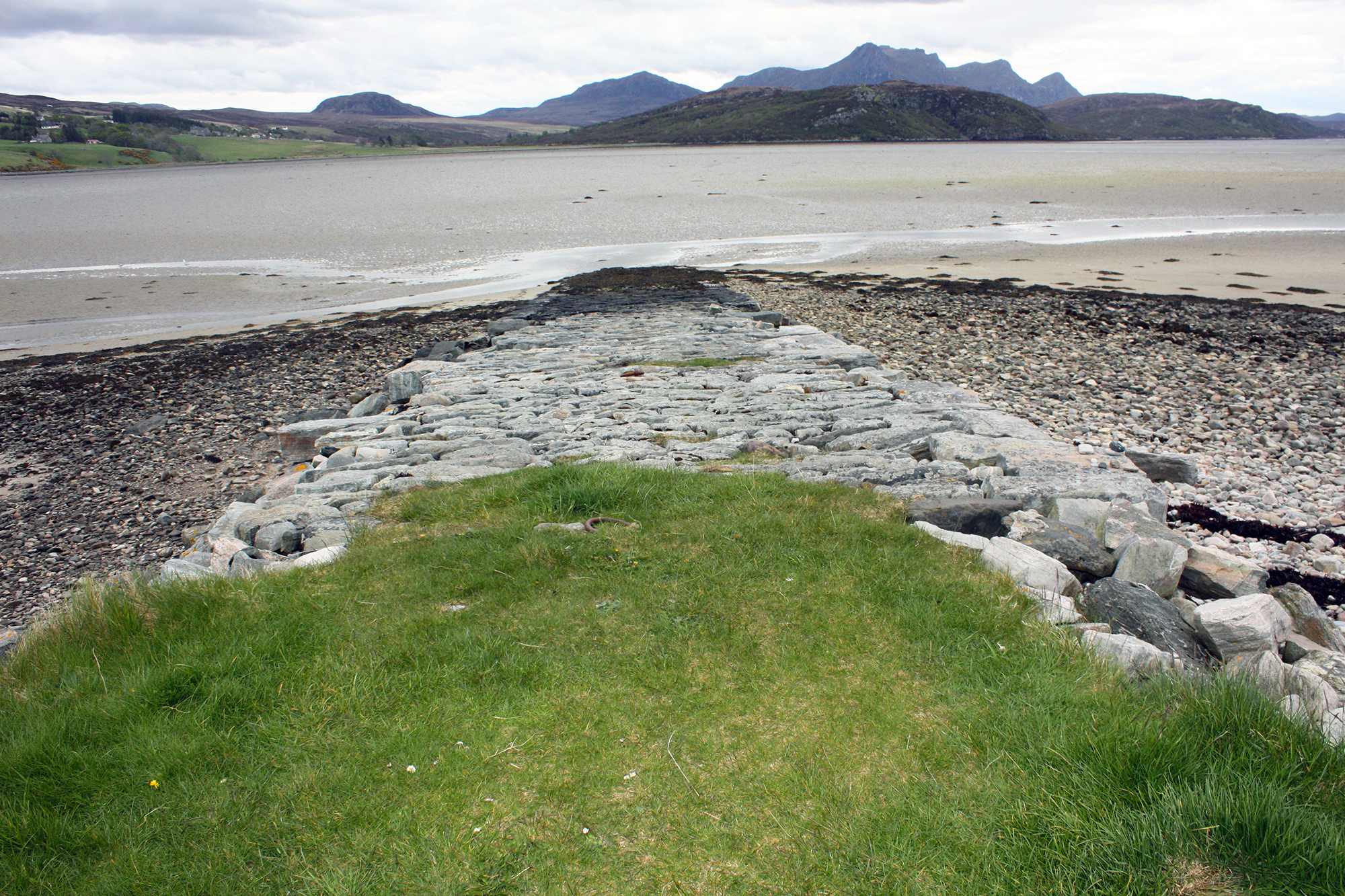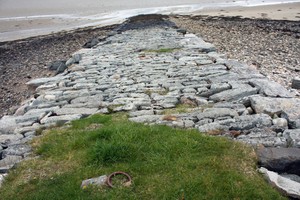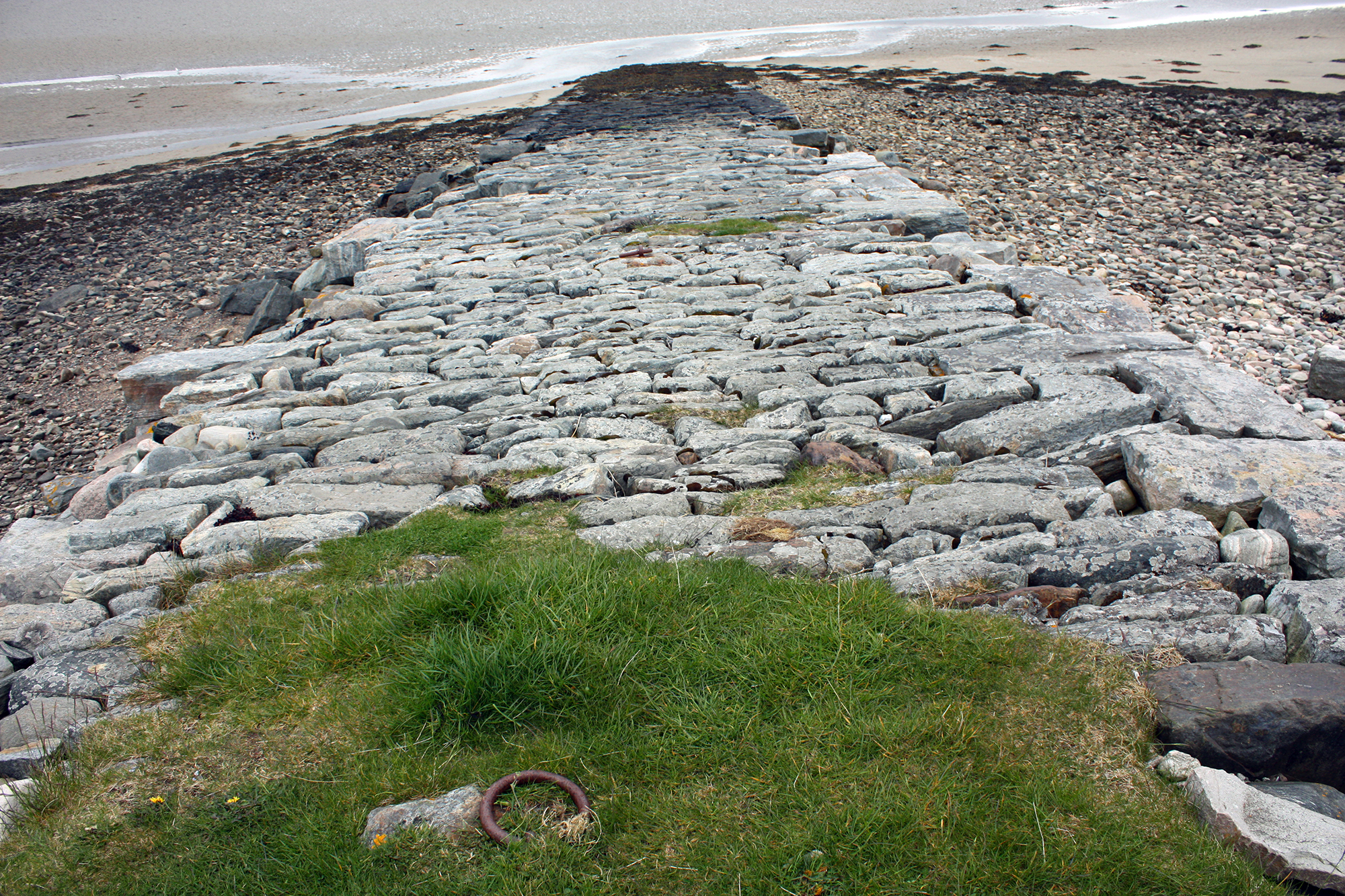| Tidal state |
Low |
| Site located? |
Yes |
| Proximity to coast edge |
Intertidal |
| Coastally eroding? |
active sea erosion |
| Threats |
structural damage/decay |
| Visibility above ground |
Highly visible (substantial remains) |
| Access |
easily accessible - no restrictions |
| Local knowledge |
is well known; has local associations/history |
| Description |
This is the ferry-terminal at the E side of the Kyle which ran to the pier (NMRS NC 55 NE 24:site no 13 above) on the W side. It is a 57 m N-S long pier or jetty which is of dry-stone construction, patched up with mortar at the landward end. The surface of this pier/jetty is 4.75 m wide and has iron mooring-rings, -pins and -bolts still in situ running down the middle. The pier/jetty is 1 m high at the landward end, running down to 0.6-0.7 m high at the the S end. The S half of this feature is covered in seaweed and sand and the whole structure has been damaged by wave- and storm-action. This should be surveyed in conjunction with the various structures associated with the ferry-transportation here (NMRS NC 55 NE 30, 24 and 29 as well as no 51 above and the small pier on Eilean Thunga (site no 53 below).
26/05/13
As described. 2 of the original 7 mooring rings survive.
The west exposed side has iron banding for c. 35m.
Outer walls constructed of squared boulders with lime and cement mortar. The core of the pier is soldier pitched - each block laid with slight lean down-slope so that the top upper edge of the block slightly higher to allow animals to grip walking or hauling up the pier. Pitching bedded on broken stone rubble core.
The foundation stones on both sides of the pier are set slightly wider than the superstructure forming a scarcement for the upper 10m of the pier.
The condition is generally stable, but the side walls in the upper part of the pier are collapsed in 3 places. The car park has compromised the top of the pier, but c. 6m of retaining wall survives on the east side. |
|




